
Auto-Translate
Medical Cannabis Lighting
Recommended PPFD and DLI levels, common lighting issues, and more
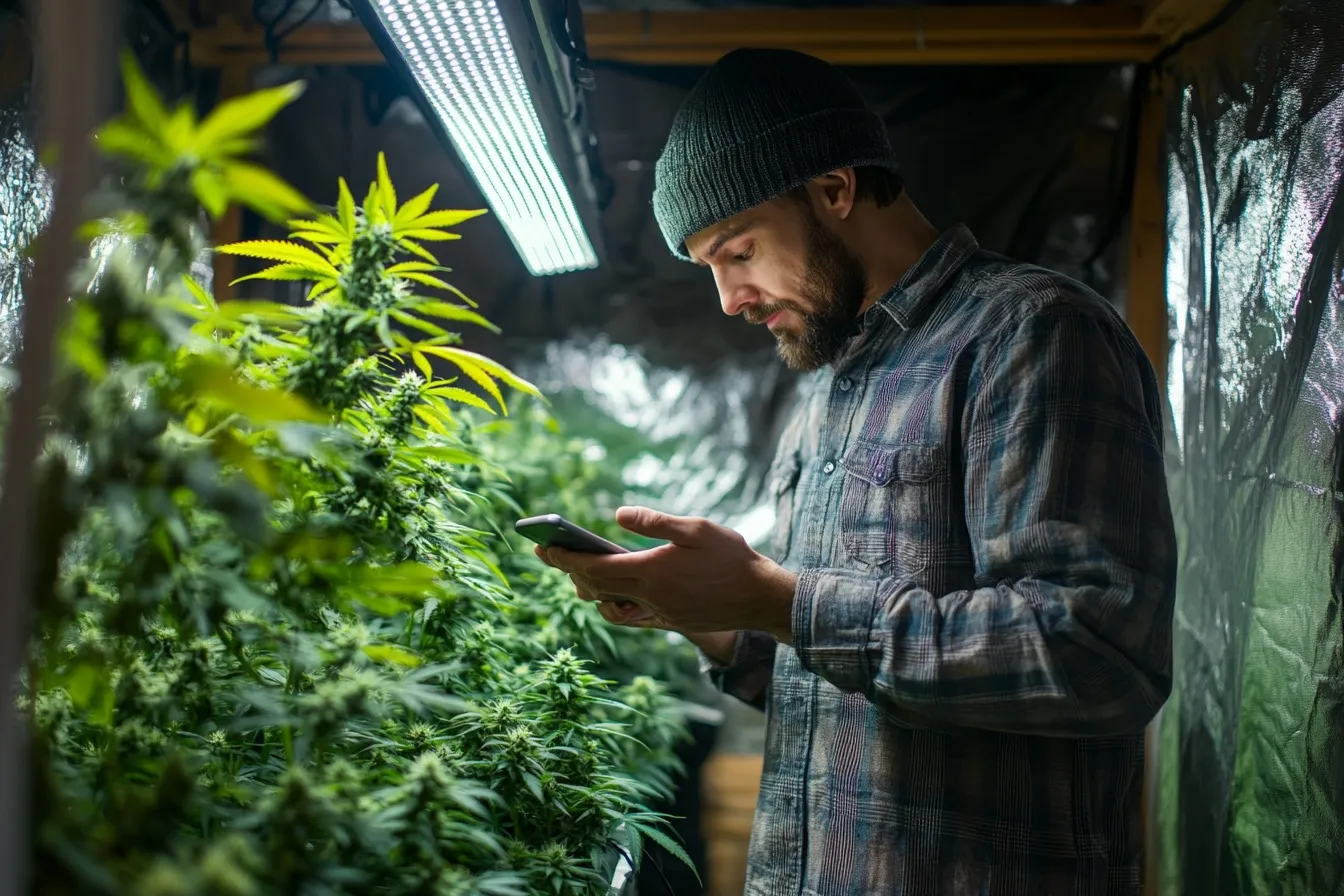
Cannabis is a notoriously light-hungry plant, requiring a substantial amount of light energy to thrive and produce high yields. This Pro guide covers everything from the science of lighting for cannabis, recommended grow light technologies, optimal lighting levels, visual signs of lighting issues, and more.
Contents
Introduction to Lighting for Cannabis
Why Lighting Is Especially Important for Cannabis Cultivators
Cannabis' characteristic of a sun-loving plant stems from its evolutionary history as a plant that naturally grows in open, sunny environments. In cultivation, proper lighting is crucial to achieve optimal growth and maximize cannabinoid production.
Cannabinoids are a group of chemical compounds found in the cannabis plant that interact with the human body's endocannabinoid system. They’re especially relevant for medical cannabis plants. The most prominent and well-studied cannabinoids include tetrahydrocannabinol (THC), cannabidiol (CBD), cannabigerol (CBG) and cannabichromene (CBC).
How Light Impacts the Cannabis Plant
The intensity (i.e. the PPFD) and duration (i.e. the photoperiod) of light directly impact the plant's photosynthesis rate, which in turn affects its overall growth, bud development, and cannabinoid synthesis. High-intensity light promotes robust vegetative growth and dense, resinous flowers.
To ensure optimal growth and high yields, it's essential to measure light intensity using tools like PAR meters (i.e. quantum sensors). This allows you to adjust and maintain ideal light levels throughout the plant's life cycle.
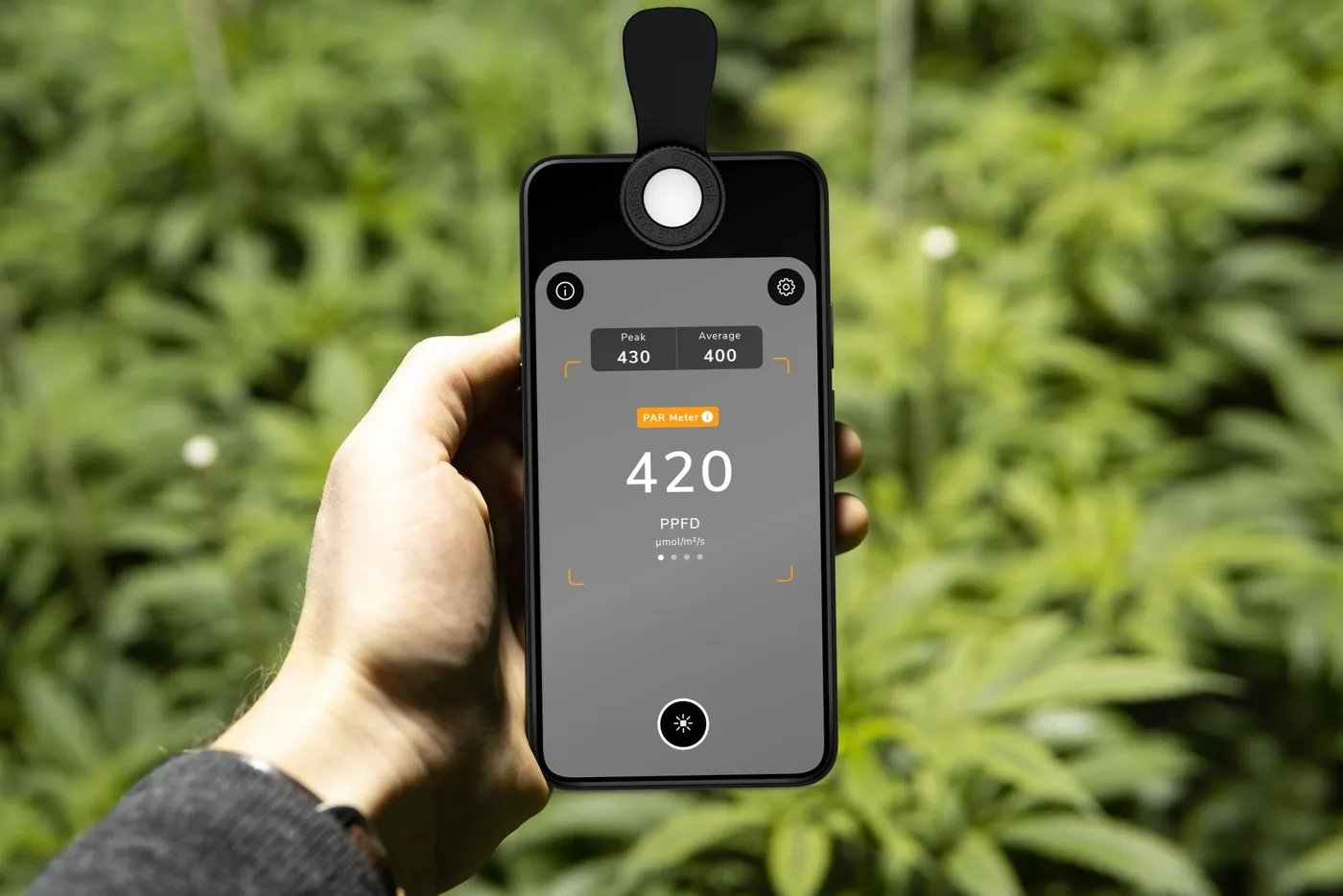
The Right Spectrum of Light for Cannabis
The light spectrum (i.e. its colors) plays a significant role when growing cannabis. The crucial light for photosynthesis falls in the visible spectrum, ranging from around 400 to 700 nm. Within this spectrum, blue light (400 – 500 nm) and red light (600 – 700 nm) are particularly important for cannabis growth and flowering. But the plant also responds to ultraviolet (UV) and infrared (IR) light.
UV light is separated into two categories: UV-A (315 – 400 nm) and UV-B (280 – 315 nm). Exposure to UV-B light has shown to stimulate trichome production as a defense mechanism, potentially increasing THC levels. However, it's crucial to note that while some UV-B can be beneficial, excessive exposure can damage the plants.
Near-infrared (NIR) (750 – 1400 nm) on the other hand has shown to influence plant morphology, potentially affecting internodal spacing and overall plant structure.
Choosing the Right Grow Lights
Based on what we’ve covered so far, you should know that if you’re growing medical cannabis in an indoor environment you need a powerful lamp that is able to produce light in a broad spectrum. This is an overview of the most common lamp types you should be looking for:
Light Emitting Diodes (LED)
LEDs are the most efficient light sources currently available, making them economical in the long run by you having to spend less on electricity. Thanks to their high efficiency, LEDs generate little heat compared to other lamps, reducing the load on the air-conditioning.
Additionally, since an LED fixture consists of many single LED chips, one can customize the spectrum of the fixture by mixing different types of LEDs tailoring it to the exact spectrum required.
A good LED fixture for cannabis consists of mostly full spectrum LEDs which provide most of the light in the range between 400 and 700 nm. And then tweaking it with additional blue and red, plus some UV-B and NIR chips.
The only downside is that LED fixtures are still a bit pricier than lamps using older technologies like HPS or MH (more on these below). Nevertheless, retail prices of LEDs have been dropping in the last few years and might continue to drop further. Also, LEDs have a really long lifespan – so treat a good fixture as an investment.
Pros: Highly customizable spectrum, energy-efficient, low operating costs, low heat output, long lifespan
Cons: Higher initial cost
Ceramic Metal Halide (CMH)
These lamps provide a spectrum close to natural sunlight, including some UV and IR radiation. CMH lamps have a higher efficiency than traditional high intensity discharge (HID) lamps such as MH or HPS. Their natural looking light allows you to easily spot plant issues, but because of the high UV output, you should definitely wear protective glasses.
Pros: Good full-spectrum light, including some UV and IR
Cons: Higher heat output and shorter lifespan than LEDs, protective glasses required
High Pressure Sodium (HPS)
HPS lamps were used all over the planet for street lighting. You might recognize them by their yellowish, orange glow. They are now mostly being phased out and replaced by their more efficient LED counterparts, but thanks to the high number of lamps that were mass produced, their retail price is relatively low. They have thus been used by growers ever since, making HPS a well-understood technology with predictable results.
HPS lamps output relatively high proportions of orange light (550 – 650 nm) making them particularly useful during the flowering stage. The downside being that everything looks yellowis, making it harder to spot issues on your plants. Another issue is their relatively short lifespan, requiring regular replacement.
Pros: High light output, good for flowering, well-understood (predictable results), low upfront cost
Cons: High heat output, less ideal for vegetative growth, short lifetime
Metal Halide (MH)
Metal Halide lamps are another type of HID light that provides a spectrum rich in blue light (400-500 nm). This makes them particularly beneficial for the vegetative growth stage of cannabis plants, promoting compact, bushy growth. MH lamps have been a staple in cannabis cultivation for years, often used in combination with HPS lamps (MH for veg, HPS for flowering).
However, like other HID lamps, they produce a significant amount of heat and are thus less energy-efficient compared to newer technologies like LEDs. They also have a relatively short lifespan and, like CMH lamps, emit UV radiation, necessitating the use of protective eyewear.
Pros: Strong in blue spectrum, excellent for vegetative growth, promotes compact plant structure
Cons: High heat output, less efficient than newer technologies, shorter lifespan, requires protective eyewear
Fluorescent (FL)
Fluorescent lamps come in two forms: either in fluorescent tubes with sockets like T5, T8, T12 etc. or as compact fluorescent lamps (CFL) with sockets like E27, E40, etc. They provide a decent full spectrum light that's suitable for cannabis growth. They're particularly popular for small-scale grows, seedlings, or mother plants due to their low heat output and ability to be placed close to the canopy without burning the plants.
However, fluorescent lamps lack the intensity needed for larger plants or flowering stages. They're less efficient than LEDs in terms of light output per watt, and their lower intensity means you'd need many fixtures to match the output of a single HID or LED grow light.
Pros: Low heat output, good for small spaces or seedlings, can be placed close to plants, relatively inexpensive
Cons: Lower light intensity not ideal for flowering or larger plants, less energy-efficient than LEDs, multiple fixtures needed for larger grows
General Recommendations
- Lamp choice: There's no absolute right or wrong choice. Each type of grow light has its place depending on your specific needs and circumstances.
- Beginner-friendly option: If you're new to growing or unsure what lamp to choose, a quality LED grow light is often a safe and efficient option.
- Dimmability: Look for dimmable fixtures, as they allow you to adjust light intensity throughout different growth stages.
- Light color: Consider the color of light your lamp outputs. A good indicator is the Color Rendering Index (CRI). Higher CRI allows you to spot plant issues more easily.
- Eye protection: Always use appropriate eye protection, especially with lamps that emit UV radiation (like CMH and MH).
- Combination approach: Consider combining different types of lights to maximize benefits. For example, using MH for vegetative growth and switching to HPS for flowering, or supplementing your main LED light with UV fluorescent tubes.Maintenance: Regular upkeep is crucial for optimal performance and longevity. Read our guide on grow light maintenance for more information.
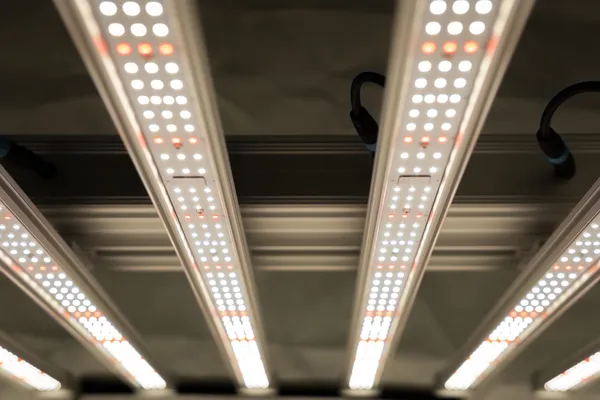
Optimizing Light Intensity for Cannabis
When dealing with high-power light sources required for cannabis growth it’s essential to measure the light intensity in your grow area so you don’t end up wasting energy (and thus, your money).
The two important measurement values you want to optimize are the photosynthetic photon flux density (PPFD) and the daily light integral (DLI). Both are measurements for photosynthetically active radiation (PAR). Understanding and managing both PPFD and DLI allows you to optimize your cannabis plants' light environment throughout their growth cycle.
If you're unsure what these terms mean, take a look at the following article:

Light Recommendations by Growth Stage
🌱 Seedling / Clone
- DLI: 10 - 15 mol/m²/d
- PPFD: 100 - 300 μmol/m²/s
- Photoperiod: 16 - 24 hours (18 hours ideal)
🌿 Vegetative
- DLI: 30 - 45 mol/m²/d
- PPFD: 250 - 600 μmol/m²/s
- Photoperiod: 16 - 24 hours (18 hours ideal)
🌻 Bloom / Flowering
- DLI: 25 - 40 mol/m²/d
- PPFD: 500 - 1050 μmol/m²/s
- Photoperiod: 10 - 14 hours (12 hours ideal)
Remember to adjust light intensity gradually as plants grow and transition between stages.
Want to Optimize Even Further?
If you're aiming to get the maximum out of your cannabis plant, we recommend to optimize DLI values for each week in a cannabis plant's typical growth cycle:
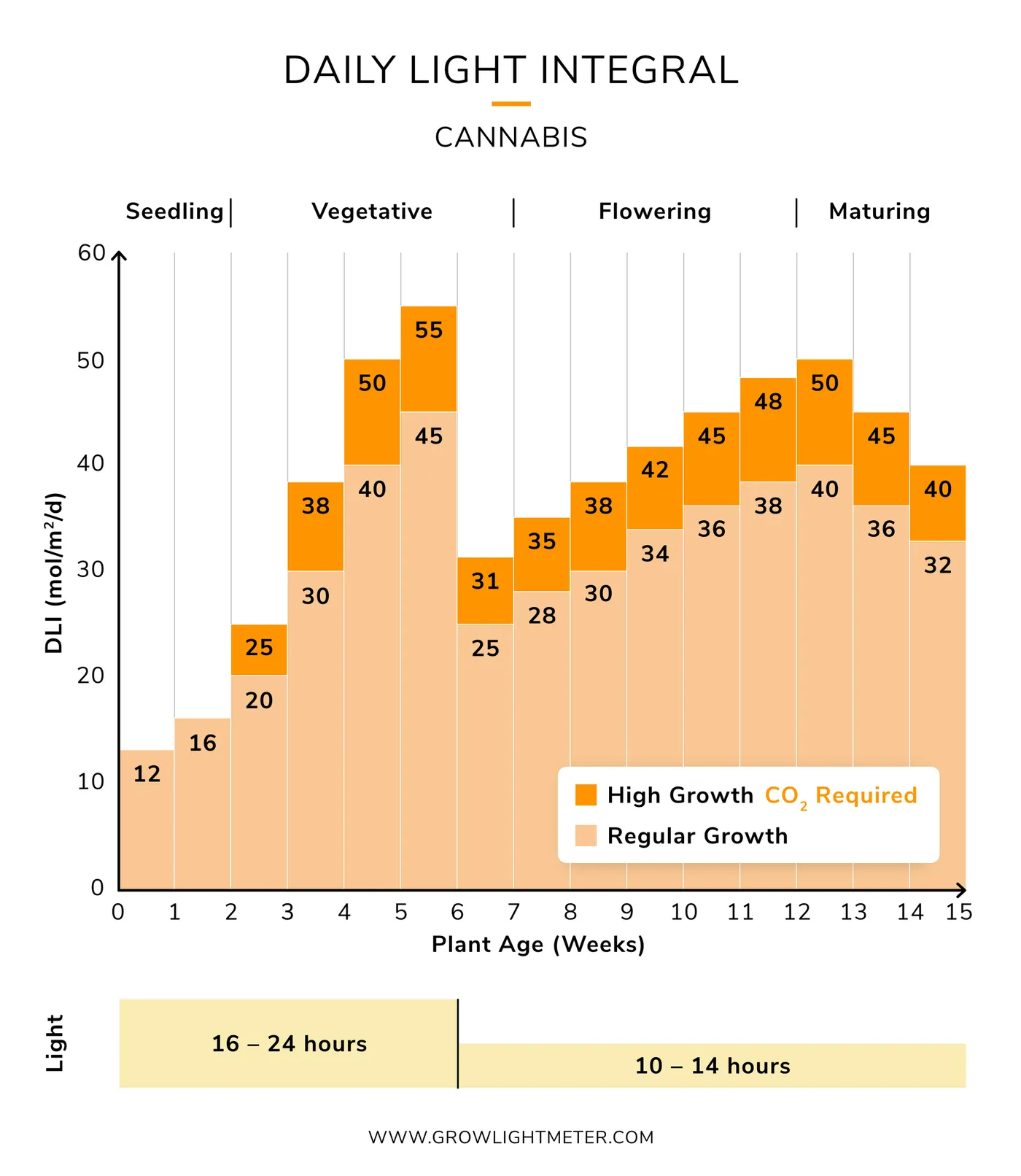
Managing PPFD and DLI
Managing PPFD
PPFD measures the intensity of light reaching your plants at any given moment. You can adjust PPFD in two main ways:
Hanging Height: Adjusting the distance between your grow light and the plant canopy affects PPFD. Moving the light closer increases PPFD, while moving it farther away decreases PPFD.
Dimming: Many modern grow lights have built-in dimming features. Reducing the dimmer intensity directly lowers the PPFD.
Managing DLI
DLI represents the total amount of light your plants receive over a 24-hour period. It's determined by both the light intensity (PPFD) and the duration of light exposure (photoperiod). You can adjust DLI by changing either or both of these factors.
For example, to increase DLI, you could:
- Increase PPFD by dimming up your lights or lowering them closer to the plants
- Extend the photoperiod (within the recommended ranges for each growth stage)
- Or use a combination of both methods
Remember, while adjusting these factors, always stay within the recommended ranges for each growth stage and monitor your plants for signs of lighting issues.
Signs of Lighting Issues
Monitor your plants for these indicators of lighting problems:
Signs of Too Much Light
Light Burn
- Symptoms: Yellow or brown leaves, especially at the top of the plant. Leaves may have green veins.
- Note: Often mistaken for nutrient deficiency, but primarily affects upper leaves.
Bleached Buds
- Symptoms: White or very pale buds, usually at the top of the plant.
- Note: These buds are often less potent and may have reduced trichome development.
Leaf Curling
- Symptoms: Leaves curling upwards or "praying" excessively.
- Note: While some leaf praying is normal, extreme curling can indicate light stress.
Reduced Water Uptake
- Symptoms: Plants drink less water than usual despite adequate temperatures.
- Note: Excessive light can cause stomata to close, reducing water uptake.
Stunted Growth
- Symptoms: Plants stop growing or grow very slowly despite being in the vegetative stage.
- Note: This can occur when plants are using all their energy to protect themselves from excess light.
Signs of Too Little Light
Stretching
- Symptoms: Increased internodal spacing, plants growing tall and lanky.
- Note: Plants stretch to reach for more light, resulting in weak stems.
Slow Growth
- Symptoms: Plants grow more slowly than expected for their strain and stage.
- Note: Compare to typical growth rates for the specific strain you're growing.
Pale or Yellow Lower Leaves
- Symptoms: Lower leaves becoming pale green or yellow.
- Note: The plant may be relocating resources to upper leaves to maximize limited light.
Reduced Bud Density
- Symptoms: Buds forming, but remaining small and airy.
- Note: Insufficient light during flowering can result in lower yields and less dense buds.
Leaf Loss
- Symptoms: Plants dropping leaves, especially from lower branches.
- Note: In low light, plants may shed leaves that aren't contributing to photosynthesis.
Regular monitoring with Photone can help you maintain optimal light levels and avoid these issues. Adjust your lighting setup based on both measurements and visual cues from your plants.
Advanced Tip: CO2 Supplementation
While proper lighting is crucial, carbon dioxide (CO2) is another vital component of photosynthesis. For advanced growers looking to maximize yields, understanding and managing CO2 levels can significantly enhance plant growth and light utilization. Increased CO2 levels allow plants to photosynthesize more efficiently, potentially leading to faster growth and higher yields.
General indoor CO2 levels of about 400 to 600 parts per million (ppm) quickly restrict photosynthetic activity to less than half of what would be possible. If you really want to max out your cannabis plant’s growth, we recommend the following CO2 levels:
| Growth Phase | CO2 Level (ppm) |
|---|---|
| Seedling / Clone | 400 – 600 |
| Vegetative | 400 – 1200 |
| Bloom / Flowering | 800 – 1500 |
To dig deeper into the topic of supplementing CO2 to your cannabis grow, we recommend our blog article covering this topic in much detail:
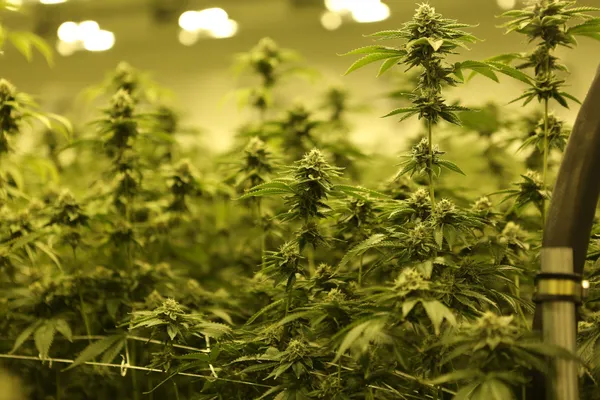
Key Takeaways
| 🔆 Light Intensity Matters Optimize PPFD and DLI levels for each growth stage |
| 💡 Choose the Right Grow Lights LED lights offer efficiency and spectral customization, while MH and HPS lights are cost-effective in the short-term |
| 📱 Measure repeatedly and regularly Measure and manage your lighting at least weekly as your plants grow |
| 🧐 Monitor for Light Stress Watch for signs of too much or too little light |
| 🫧 Consider Advanced Techniques For experienced growers, CO2 supplementation can enhance growth when combined with proper lighting |

